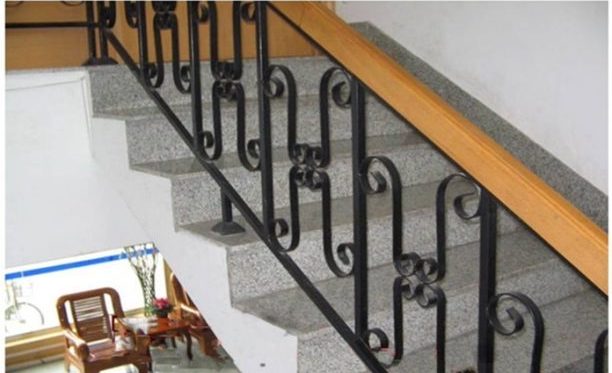- August 23, 2023
- by Grace
- Security Door
Complete Guide to Stainless Steel Grades and Types
You may work with several grades and varieties of stainless steel on a daily basis. How do you determine the grades and types of stainless steel to use?
This Blog includes all the information you require to become an expert in stainless steel, its metallurgy, varieties, and qualities.
What is Stainless Steel?
The word “stainless steel” refers to a variety of stainless steels, including austenitic, ferritic, martensitic, ferritic-austenitic (Duplex), and precipitation-hardened varieties. Each of its varieties has particular qualities, uses, and microstructures. Heat treatment has different effects on different types of stainless steel.
Grades and Types of Stainless Steels
Ferritic Stainless steel
Austenitic Stainless Steel
Martensitic Stainless Steel
Duplex Stainless Steel
Precipitation hardened (PH) Stainless Steel
1. FERRITIC STAINLESS STEEL
Stainless steel with a chromium base known as ferritic stainless steel is a member of the ferrite family of steels. It is a well-liked option for many applications because of its good formability and weldability. It is frequently employed in industrial, architectural, and transportation applications and has a great resistance to corrosion.
A form of stainless steel known as ferritic stainless steel has a ferrite component in its microstructure. The steel acquires exceptional mechanical and corrosion-resistance qualities during this period. To satisfy particular applications, ferritic stainless steels are offered in a number of grades, each with a unique set of qualities. 409, 430, and 442 are a few examples of common grades.
2. AUSTENITIC STAINLESS STEEL
This blog concentrated on 18/8 or 18Cr-8Ni steels, sometimes known as austenitic stainless steel. With a minimum yield strength of about 210 Mpa (30 ksi) at room temperature, they have tensile strength comparable to mild steels. They offer excellent sub-zero impact qualities, are resistant to thermal transformation hardening, and are weldable. Cold work can harden them and increase their strength.
3. MARTENSITIC STAINLESS STEEL
High quantities of carbon are seen in martensitic stainless steel, a form of stainless steel. When heat is applied, this kind of steel is noted for hardening quickly. Knives, tools, and medical equipment are frequently made from martensitic stainless steel grades, which come in a variety of sizes and shapes.
The corrosion resistance of martensitic stainless steel is one of its benefits. Additionally, this kind of steel can be hardened to produce a product that is robust and long-lasting. Additionally magnetic, martensitic stainless steel is a great option for applications requiring a strong magnetic field.
4. DUPLEX STAINLESS STEEL
A form of stainless steel called duplex contains both austenitic and ferritic stainless steel. Because duplex stainless steel resists corrosion better than other varieties of stainless steel, it is a common option for many industrial applications.
The austenitic stainless steel type known as duplex stainless steels has a better level of corrosion resistance than typical austenitic stainless steels. This is because the addition of molybdenum or nitrogen causes precipitates to develop that prevent corrosion.
There are several grades of duplex stainless steel, each of which has unique characteristics. S32205, the most popular duplex stainless steel grade, exhibits exceptional resistance to stress corrosion cracking caused by chloride-ion ions
5. PRECIPITATION HARDENED (PH) STAINLESS STEEL
A form of stainless steel that has undergone heat treatment to increase strength and hardness is precipitation hardened (PH) stainless steel. Precipitation hardening, which happens when minor alloying elements, like chromium and nickel, precipitate from the austenite phase to form finely dispersed particles inside the ferrite phase, is what causes the enhanced strength and hardness.
The precipitated particles have improved strength and hardness because they are exceedingly rigid and resistant to plastic deformation. By heating the steel to a temperature over the eutectoid temperature (the temperature at which austenite converts to ferrite and cementite), followed by quenching in water or oil, precipitation hardening can be accomplished.
Precipitation-hardened stainless steel is available in a number of grades, each with a unique set of characteristics. For instance, the grade PH13-8Mo is made for applications requiring high strength and hardness as well as corrosion resistance.
Most Common Grades of Stainless Steel
Stainless steel comes in several grades that can be identified by their mechanical and chemical characteristics. 304, 316, and 430 stainless steel are the most popular varieties.
The most adaptable variety, type 304 stainless steel, resists corrosion from the majority of substances. Additionally, welding is simple and tough. 316 stainless steel has a higher melting point than 304 and is more corrosion-resistant. While having superior formability and being less expensive than the other two varieties, 430 stainless steel is less corrosion-resistant.



